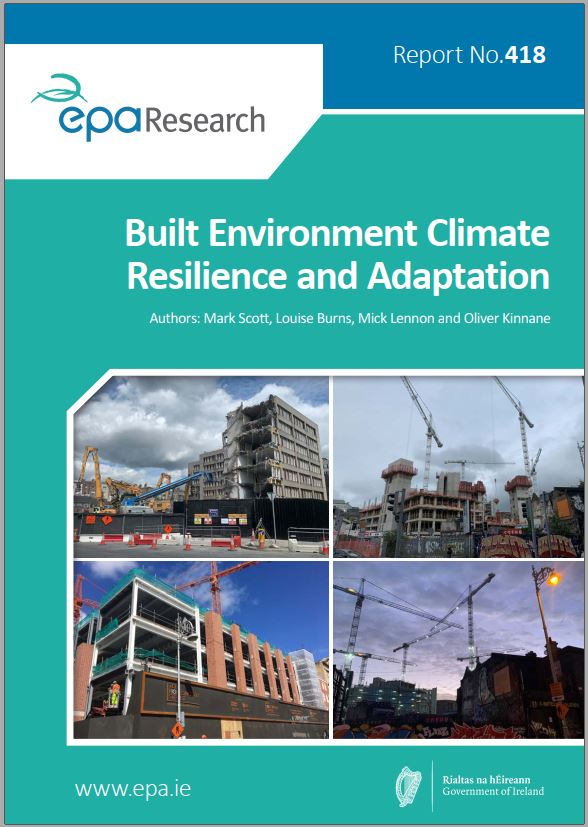Authors: Mark Scott, Louise Burns, Mick Lennon and Oliver Kinnane
Summary: Climate change risks present a clear challenge for Ireland’s built environment. Adaptation is the critical second pillar of climate action alongside mitigation. This needs an urgent whole-of-government and whole-of-society approach. There is significant scope for increasing policy coherency towards adaptation through the planning system, building control, building regulation performance requirements, industry standards and building design specifications.

Watch the project highlights video
Climate change risks present a clear challenge for Ireland’s built environment. It has the potential to cause enormous damage to housing, commercial property and critical infrastructure, imposing significant financial costs and posing risks to human health and wellbeing. At the urban scale, vulnerability to flooding (fluvial, pluvial and coastal), coastal erosion and heat stress will increase as a result of this anticipated climate change. At the building scale, building fabric is at increased risk because of increased precipitation (increased water penetration and indoor moisture content), subsidence (more variable water content in soil), more intense freeze–thaw cycles, increased risk of damage from wind and more stormy weather, including structural damage and increased weathering due to driving rain, and impacts on indoor air quality and thermal comfort. These risks are systemic, in that development patterns and decisions can compound and reinforce future risks, such as building on flood plains or increasing impermeable surface cover in cities.
Adaptation is the critical second pillar of climate action alongside mitigation. This needs an urgent whole-of-government and whole-of-society approach. In relation to the built environment, greater policy emphasis is currently given to mitigation measures than to adaptation. There is significant scope for increasing policy coherency towards adaptation through the planning system, building control, building regulation performance requirements, industry standards and building design specifications. A broader set of anticipated climate risks could be considered by integrating mitigation and adaptation actions (to avoid maladaptation).
There is good awareness among stakeholders of a portfolio of policy and design approaches to adaptation. However, a gap in policy implementation and barriers to holistic action still exist. In relation to building design, these barriers include a lack of client interest in green adaptation; a tendency to construct to minimum standards; a gap between building design and building performance; the behaviour of building occupants in relation to building performance; and monitoring and review. In relation to planning, barriers include a lack of adequate resourcing; institutional silos and/or inertia; and the absence of specialist knowledge.
Key priorities include: